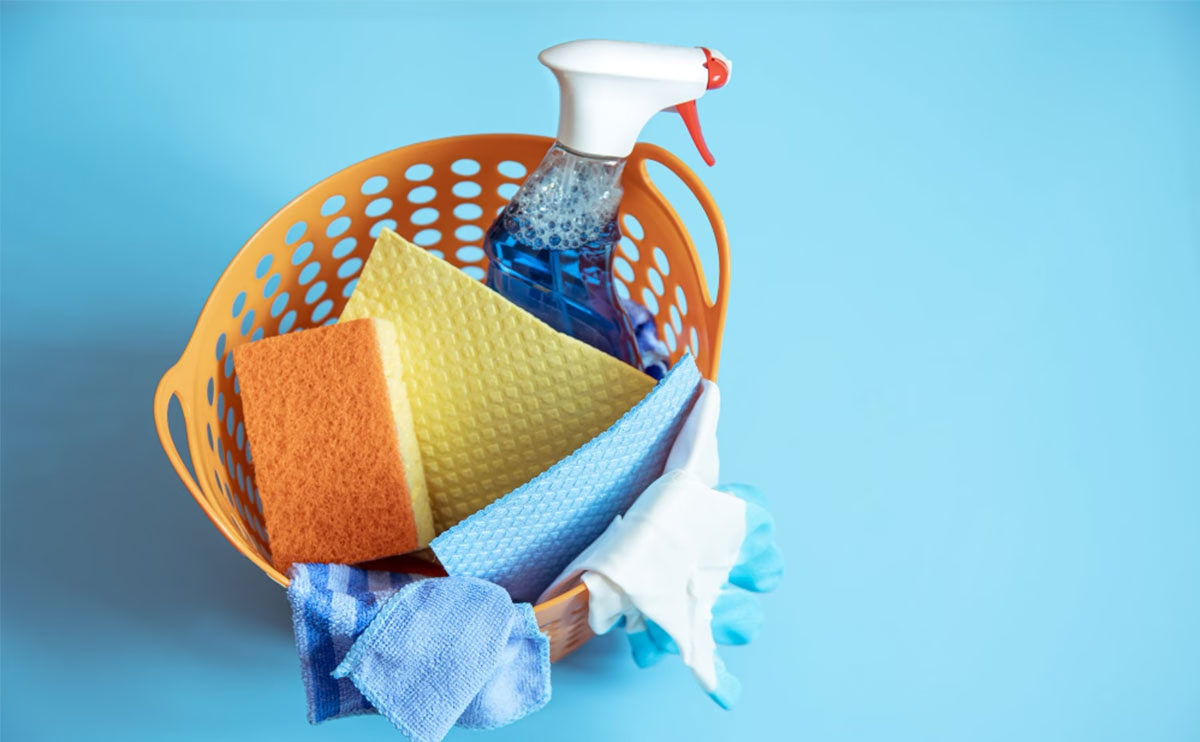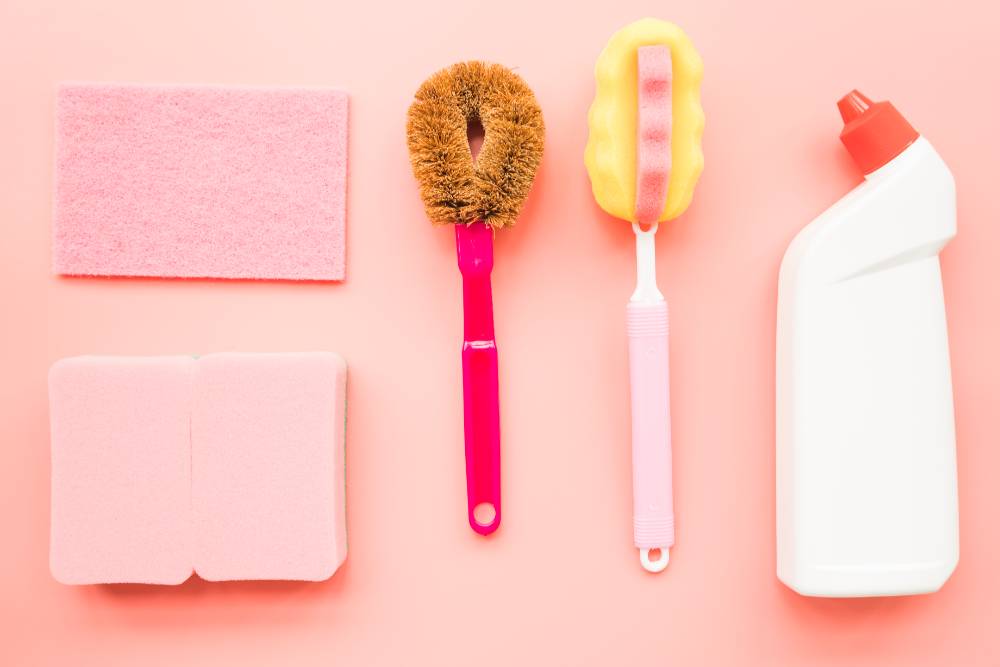When Must a Knife Be Cleaned and Sanitized?

A kitchen knife is one of the most essential tools in cooking, but it also comes with certain responsibilities regarding cleanliness and hygiene. Knives can easily harbor bacteria, dirt, and food particles that can lead to contamination if not properly cleaned and sanitized. Whether you’re a professional chef or simply cooking at home, understanding when and how to clean and sanitize your knives is crucial for food safety.
Table of Contents
Why Cleaning and Sanitizing Knives is Important
Preventing Cross-Contamination in Food Preparation
Knives often come in contact with different foods, some of which may contain harmful bacteria. For instance, raw meats such as poultry and beef can carry pathogens like Salmonella or E. coli. Suppose the knife used to cut raw meat is used to cut vegetables or ready-to-eat foods without properly cleaning and sanitizing. In that case, harmful bacteria can transfer, leading to cross-contamination. This is why cleaning and sanitizing your knife after every use is critical, especially when switching between different food types.
Health and Hygiene Concerns in Culinary Environments
In professional kitchens, sanitation is not just about food quality—it’s a matter of public health. Poor knife hygiene can lead to foodborne illnesses that harm customers and damage a restaurant’s reputation. While the risks are less severe for home cooks, the importance of food safety cannot be overstated. Clean and sanitized knives ensure that the food you prepare is safe to consume.

The Difference Between Cleaning and Sanitizing
Cleaning: Removing Dirt and Debris
Cleaning a knife involves removing visible dirt, food particles, and oils from the blade and handle. This process typically requires soap and water to remove the buildup of substances like food residues and grease. A clean knife is free of any leftover food remnants, but cleaning alone doesn’t necessarily kill harmful bacteria.
Sanitizing: Reducing Bacteria and Pathogens to Safe Levels
Sanitizing, on the other hand, goes a step further. This process uses chemical agents or heat to kill harmful bacteria and reduce the microbial load on a knife’s surface. Sanitizing ensures that any lingering pathogens that could cause foodborne illnesses are neutralized, making the knife safer to use for preparing different foods.
How Often Should a Knife Be Cleaned?
Frequency Based on Usage (Every Use, Between Uses, etc.)
Knives should be cleaned after every use. It’s essential to clean them thoroughly, especially when working with raw foods contaminated with bacteria. If you use the same knife for multiple tasks (e.g., cutting meat and vegetables), cleaning the knife between uses is crucial to prevent cross-contamination. If you work professionally, following proper hygiene protocols may mean cleaning knives more frequently.
Considerations for Different Knife Types (Chef’s Knife, Paring Knife, etc.)
While the cleaning frequency remains generally the same for all knives, specific knives may require more attention. A chef’s knife, for example, is often used for various tasks, including cutting raw meat and vegetables, making it more prone to contamination. Smaller knives, like paring knives, may require less cleaning, but they should still be cleaned thoroughly after every use.
How Often Should a Knife Be Sanitized?
In Food Safety Regulations (Restaurants, Catering, etc.)
In commercial kitchens, knives should be sanitized after every use. The FDA Food Code and similar regulations in various countries stress the importance of sanitizing knives after cutting raw meat, poultry, seafood, or other potentially hazardous foods. Sanitization is critical to a food safety plan to ensure that all kitchen tools remain free from harmful microorganisms.
At Home vs. Commercial Kitchens: Different Standards
Sanitizing knives at home may not always be necessary after every use, but it is still a good practice, especially after preparing raw meat. While restaurants and commercial kitchens must adhere to strict sanitation rules, home cooks can use discretion and sanitize their knives when handling potentially dangerous foods like raw meats or seafood.
When to Clean and Sanitize a Knife
After Cutting Raw Meat, Poultry, and Seafood
One of the most critical times to clean and sanitize a knife is after cutting raw meat, poultry, or seafood. These foods often carry harmful bacteria that can quickly transfer to your knife. After handling raw meat, thoroughly clean your knife with hot, soapy water, then sanitize it with a food-safe sanitizer to ensure it’s free from pathogens.
After Cutting Produce and Ready-to-Eat Foods
While produce and ready-to-eat foods are generally safer, they can still become contaminated if a knife previously touched raw meat or unclean surfaces. Cleaning your knife after cutting produce is essential to ensure you don’t unintentionally transfer bacteria to the next item being sliced or chopped.
When Switching Between Different Ingredients or Cutting Tasks
Switching between cutting tasks requires immediate cleaning and sanitizing to prevent cross-contamination. If you’re chopping vegetables and then need to switch to cutting raw meat, for example, a quick rinse and sanitize are necessary to avoid mixing harmful bacteria from one food to another.
The Role of Knife Handles in Sanitization
Why Knife Handles Should Also Be Cleaned and Sanitized
It’s easy to focus solely on the blade when cleaning and sanitizing knives, but the handles are equally important. The handles can accumulate dirt, bacteria, and oils from your hands, which can be transferred to the food you prepare. It’s essential to clean and sanitize the handles as thoroughly as the blade, especially if you’ve been handling raw meat or other potentially harmful substances.
How to Properly Clean a Knife
Step-by-Step Guide for Washing Knives Safely
1. Rinse the Knife: Begin by rinsing the knife under warm water to remove large food particles.
2. Apply Soap: Use mild dish soap and a non-abrasive sponge or cloth to clean the blade and handle. Avoid harsh scrubbing that can damage the knife’s surface.
3. Rinse Again: After washing, rinse the knife thoroughly to remove any soap residue.
4. Dry Immediately: Dry the knife with a clean towel or cloth to prevent water spots or rusting.
The Importance of Drying Knives Properly After Cleaning
Leaving knives wet can result in the growth of bacteria or the formation of rust on the blade. Always dry your knife immediately after washing it, and store it in a dry, clean place to maintain its condition and hygiene.
Recommended Tools and Products for Cleaning Knives
Dish Soap, Sponges, Brushes, and Other Tools
Use a soft sponge or dishcloth to avoid scratching the blade. Harsh scrubbing brushes can damage the knife’s surface, especially if coated with a special finish. Mild dish soap is usually sufficient for cleaning. Consider using a nylon brush or knife-safe cleaning tool for stubborn grime.

Non-Abrasive Cleaning Materials to Prevent Knife Damage
It’s crucial to use non-abrasive materials when cleaning knives. Steel wool or harsh brushes can cause micro-abrasions on the blade, which may impact its sharpness and appearance.
How to Properly Sanitize a Knife
Using Approved Sanitizers for Kitchen Use (Bleach Solutions, Alcohol, etc.)
After cleaning your knife, use an approved sanitizer, such as a diluted bleach solution or food-grade alcohol. Follow the instructions on the product for proper dilution and application.
Methods for Properly Applying and Rinsing Sanitizers
To sanitize the knife, spray or dip it in the sanitizer and let it sit for the recommended amount of time. Afterward, rinse the knife thoroughly with clean water to remove any excess sanitizer. This ensures the knife is safe for food preparation without leaving harmful residues behind.
Common Mistakes in Knife Cleaning and Sanitizing
Overlooking Knife Handles and Crevices
When cleaning knives, many people focus only on the blade, forgetting that the handle can also harbor bacteria. Be sure to clean and sanitize the entire knife, especially crevices and areas where food particles can accumulate.
Using the Wrong Cleaning or Sanitizing Agents
Not all cleaning or sanitizing products are suitable for knives. Harsh chemicals can damage the blade or affect food safety. Stick to mild dish soaps and approved sanitizing solutions to ensure both safety and longevity for your knives.
The Impact of Poor Knife Hygiene
Consequences of Inadequate Knife Cleaning and Sanitization
If knives aren’t properly cleaned and sanitized, they can become breeding grounds for harmful bacteria that could cause foodborne illnesses. This is especially risky when dealing with raw meat, poultry, or seafood.
Long-Term Effects on Knife Performance and Safety
Poor knife hygiene not only poses health risks but can also damage the knife itself. Bacteria and food particles left on a blade can cause rust, tarnishing, and deterioration over time, leading to a shorter lifespan for the knife.
Special Considerations for Different Environments
Home Kitchens vs. Professional Kitchens: Different Cleaning Needs
In home kitchens, while cleaning and sanitizing are still important, the standards may not be as rigorous as in commercial kitchens. However, home cooks should still follow safe food handling practices, particularly when preparing raw meat or seafood.
Outdoor Cooking and Knife Hygiene
Outdoor cooking, such as barbecuing or camping, may introduce unique challenges for knife cleanliness. Ensure that knives are cleaned and sanitized after use, especially when cooking outdoors where access to clean water or sanitizing products may be limited.
Tips for Maintaining Knife Hygiene on a Budget
Cost-Effective Ways to Keep Knives Clean and Safe
You don’t need expensive tools or products to maintain knife hygiene. Basic dish soap, a gentle sponge, and a safe sanitizer are all you need to keep your knives in top condition without breaking the bank.
FAQs
1. What are the best sanitizing agents for knives?
Approved food-safe sanitizers such as bleach solutions (diluted according to instructions) or isopropyl alcohol are effective options for sanitizing knives.
2. How can I prevent knife rust while cleaning?
Dry knives immediately after cleaning, and store them in a dry place to prevent rust. Avoid leaving knives submerged in water for prolonged periods.
3. Should I clean my knife after each use or after cutting raw meat?
It’s best to clean your knife after every use to prevent bacteria buildup and cross-contamination, especially if switching between different food types.
4. Can I use the same sponge to clean my knife and dishes?
Separate sponges are recommended for knives and dishes to avoid cross-contamination, especially when dealing with raw meat.
5. What is the difference between cleaning and sanitizing in a kitchen?
Cleaning removes dirt and food residues, while sanitizing reduces bacteria and pathogens to safe levels, preventing foodborne illness.
6. Are there any special knife-cleaning tools I should use?
While a regular dish sponge or cloth is fine, consider using a nylon brush for stubborn grime or food particles. Avoid using harsh abrasives that can damage the blade.




